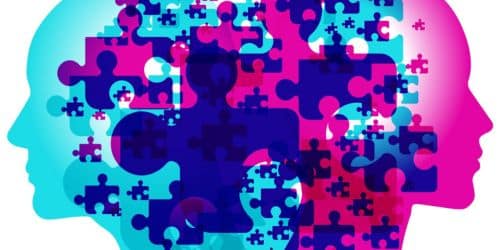Psychoanalytic theory, developed by Sigmund Freud, is a comprehensive psychological framework that explores the structure of the mind. It also explores the development of personality and the influence of unconscious processes on human behavior. This theory revolutionized the field of psychology and laid the foundation for modern psychotherapy. Psychoanalytic theory posits that human behavior and experiences are influenced by unconscious drives and conflicts. According to Freud, the mind is divided into three main parts: the conscious, the preconscious, and the unconscious. In this article, we would be looking at everything you need to know about the importance of psychoanalysis as it houses repressed thoughts, memories, and desires that greatly impact an individual’s thoughts, feelings, and behaviors.
Psychoanalytic Theory
The psychoanalytic theory is a comprehensive psychological framework that explores the structure of the mind, and the development of personality. It includes the influence of unconscious processes on human behavior. It is based on the belief that human behavior is driven by unconscious desires, conflicts, and motivations.
Elements of the Psychoanalytic Theory
#1. Unconscious mind
Freud proposed that the mind is divided into three parts – the conscious, the preconscious, and the unconscious. The unconscious mind contains repressed thoughts, memories, and desires that influence behavior without conscious awareness.
#2. Psychosexual stages
Psychosexual stages of development are in character by the focus of pleasure that needs energy on different erogenous zones. These stages include oral, anal, phallic, latency, and genital stages.
#3. Defense Mechanisms
Psychoanalytic theory emphasizes the use of defense mechanisms as unconscious strategies to protect oneself from anxiety or distress.
#4. Tripartite Personality Structure
The personality consists of three parts – the id, ego, and superego. The id operates on the pleasure principle, seeking immediate gratification. The ego operates on the reality principle, mediating between the id and external reality. The superego represents internalized social and moral standards.
#5. Psychoanalysis
Psychoanalysis is the therapeutic technique associated with psychoanalytic theory. It involves a close and prolonged therapeutic relationship between the analyst and the client.
Psychoanalytic Theory Freud
Freud’s psychoanalytic theory is a framework used to study and explain human behavior, development, and the workings of the mind. According to Freud, human behavior is influenced by unconscious drives and desires, which can be traced back to early childhood experiences.
Freud proposed that the mind consists of three main components: the id, ego, and superego. The id represents our unconscious, instinctual desires, seeking immediate gratification. The ego mediates between the id and the external world, making decisions based on reality and societal norms. The superego represents our internalized moral values and societal expectations. One of Freud’s most famous concepts is the Oedipus complex, which describes a child’s feelings of desire for the opposite-sex parent and rivalry with the same-sex parent. Freud believed that successfully resolving the Oedipus complex was crucial for healthy development.
Freud also introduced defense mechanisms, such as repression, projection, and denial, which he believed individuals cope with anxiety and protect the ego from disturbing thoughts and memories. Studying Freud’s psychoanalytic theory can provide valuable insights into human behavior and the workings of the mind.
Sigmund Freud’s psychoanalytic theory is a theory of personality organization and the dynamics of personality development. It has had a profound influence on psychology and continues to shape our understanding of human behavior and therapy. Sigmund Freud’s psychoanalytic theory is the basis for the practice of psychoanalysis.
Practical Basis for the Sigmund Freud’s Psychoanalytic Theory
#1. The Structure of the Mind
Freud proposed that the mind consists of three main components: the id, ego, and superego. The id is the most primitive and operates on the pleasure principle, seeking immediate gratification of basic desires and instincts. The ego develops in response to the demands of reality and acts as a mediator between the id and the external world. The superego represents the internalized moral and social standards acquired from parents and society.
#2. Unconscious Processes
Freud believed that a significant portion of the mind operates at an unconscious level. The unconscious contains repressed thoughts, memories, and desires. These thoughts have been pushed out of conscious awareness due to their threatening or disturbing nature. These unconscious processes can influence behavior, emotions, and experiences.
#3. Psychosexual Development
Freud proposed that individuals pass through a series of psychosexual stages during childhood. The stages are characterized by the focus of libido (sexual energy) on different erogenous zones. The stages are the oral stage (0-1 years), anal stage (1-3 years), phallic stage (3-6 years), and latency stage (6-12 years). The final stage is the genital stage (puberty onwards). Unresolved conflicts or fixations at any stage can lead to psychological difficulties in adulthood.
#4. Defense Mechanisms
Freud identified defense mechanisms as psychological strategies used by the ego to cope with anxiety. It is also to protect the individual from distressing thoughts or conflicts.
#5. Dreams and the Interpretation of Symbols
He developed a method called dream analysis. Symbols and hidden meanings in dreams are interpreted to gain insight into unconscious desires and conflicts. Freud argued that dreams are the result of the fulfillment of repressed wishes and the expression of unconscious desires.
#6. Transference and Countertransference:
Countertransference refers to the therapist’s emotional reactions and unconscious responses to the client. Both transference and countertransference are seen as valuable sources of information for understanding unconscious dynamics.
#7. Contemporary Influence
Many contemporary therapeutic approaches, such as psychodynamic therapy, still incorporate concepts and techniques derived from psychoanalytic theory.
What is Psychoanalytic Theory
Psychoanalytic theory is a theory of personality organization and the dynamics of personality development relating to the practice of psychoanalysis. It conjectures that all mental life exists on two levels: within the realm of consciousness and the unconscious, which is a Freudian concept. Its fundamentals are always present, which include an understanding of transference, an interest in the influence of the past on the present, and the importance of early childhood experiences in shaping personality development. The theory encompasses the idea that all people have unconscious thoughts, memories, emotions, and motivations that influence their behavior. It focuses on understanding the underlying emotional conflicts and unconscious processes that contribute to psychological distress.
Psychoanalytic Theory Personality
In psychoanalytic theory, personality is viewed as a complex and dynamic system shaped by various internal and external factors.
Here are some of the psychoanalytic theories related to personality:
#1. Id, Ego, and Superego
Freud posited that the mind is divided into three components that interact to shape personality.
#2. Unconscious Processes
According to psychoanalytic theory, a significant part of our mental activity occurs at an unconscious level.
#3. Defense Mechanisms
Individuals employ defense mechanisms to protect themselves from anxiety and psychological distress.
#4. Psychosexual Stages
Freud proposed that personality development occurs through a series of psychosexual stages during childhood.
#5. Unconscious Desires and Conflicts
These unconscious desires and conflicts arise from repressed thoughts and emotions. It is mostly related to early childhood experiences and unresolved psychosexual stages.
#6. The Influence of Early Childhood Experiences
Experiences with parents and caregivers, leave imprints on the unconscious mind and shape one’s attitudes, behaviors, and relationships in adulthood.
What is the Main Idea of Psychoanalytic Theory?
The idea of psychoanalytic theory is that human behavior is influenced by unconscious processes, including repressed desires, conflicts, and motivations. By understanding and addressing these unconscious factors, individuals can gain insight into themselves and alleviate psychological difficulties.
Psychoanalytic theory proposes the existence of an unconscious mind, and that unresolved emotional conflicts and traumas from childhood can lead to psychological distress in adulthood.
The theory emphasizes the importance of exploring and understanding underlying emotions and unconscious processes to promote mental health and well-being.
What is Sigmund Freud’s Psychoanalytic Theory?
Sigmund Freud’s psychoanalytic theory is a theory of personality organization and the dynamics of personality development that is the basis for the practice of psychoanalysis. According to Freud’s theory, human personalities evolve through a series of phases: the Id, the Ego, and the Superego. Freud believed that all mental life exists on two levels: within the realm of consciousness and the unconscious. The theory also encompasses the idea that all people have unconscious thoughts, memories, emotions, and motivations that influence their behavior. Its fundamentals are always present, such as an understanding of transference. An interest in the influence of the past on the present, and the importance of early childhood experiences in shaping personality development. Psychoanalysis, which was founded by Freud, focuses on understanding the underlying emotional conflicts and unconscious processes that contribute to psychological distress.
What are the Principles of Psychoanalytic Theory?
Psychoanalytic theory originated with the work of Sigmund Freud and has been built upon by subsequent psychoanalysts.
Here are some principles of psychoanalytic theory:
- Unconscious Mind
- Dynamic Interplay
- Psychosexual Development
- Defense Mechanisms
- Importance of Early Childhood
- The Role of Dreams
- The Therapeutic Process
- The idea of free association
Overall, psychoanalytic theory emphasizes the importance of exploring and understanding underlying emotions and unconscious processes to promote mental health and well-being.
Who is the Father of Psychoanalytic Theory?
The father of psychoanalytic theory is widely recognized as Sigmund Freud. He developed and popularized the field of psychoanalysis, which has significantly influenced psychology and the understanding of human behavior. He was an Austrian neurologist and founder of psychoanalysis in the late 19th and early 20th centuries. Freud’s work has had a significant impact on the field of psychology and psychiatry, and his theories about the human mind, unconscious, and personality development are still debated and studied today.
What are the Stages of Psychoanalytic?
The psychoanalytic theory proposes that human development occurs in stages. Freud outlined five psychosexual stages of development. These stages, according to Freud, shape an individual’s personality and psychological development. Failure to resolve conflicts at any stage might lead to fixation or psychological issues later in life.
These stages are:
- Oral Stage: This stage occurs from birth to around 18 months. The primary focus is on the mouth, and pleasure is derived from activities such as sucking and biting.
- Anal Stage: This stage typically occurs between the ages of 18 months and 3 years. The focus shifts to the anus, and pleasure is derived from activities related to bowel movements and control.
- Phallic Stage: Occurring between the ages of 3 and 6 years, the phallic stage centers around the genitals. Children develop unconscious sexual desires for the opposite-sex parent and experience the Oedipus or Electra complex.
- Latency Stage: This stage spans from around 6 years to puberty. Sexual feelings are repressed, and children focus on developing social and cognitive skills.
- Genital Stage: Beginning at puberty, the genital stage marks the reawakening of sexual interests. Individuals develop mature sexual relationships and engage in adult sexual activities.
What is the Origin of Psychoanalytic Theory?
Psychoanalytic theory, one of the most influential theories in psychology, was developed by Sigmund Freud, an Austrian neurologist and psychiatrist. Freud is often referred to as the “father of psychoanalysis” and his work laid the foundation for the development of psychoanalytic theory.
Freud began developing his ideas in the late 19th century and early 20th century. He drew inspiration from various sources, including his medical training, clinical observations, and his own personal experiences. Freud’s ideas were shaped through his clinical work with patients suffering from psychological disorders. He pioneered the use of techniques such as free association, dream analysis, and the interpretation of symbolic meanings to explore the unconscious mind and uncover the underlying causes of psychological distress. Freud’s revolutionary approach emphasized the importance of early childhood experiences, sexuality, and unconscious motivations in shaping human behavior and personality.
Freud published his groundbreaking book, “The Interpretation of Dreams,” in 1899, which presented his theories on the nature and function of dreams and introduced many of the key concepts of psychoanalysis. This work marked the beginning of psychoanalytic theory and laid the groundwork for further elaboration and development of Freudian concepts.
Conclusion
The psychoanalytic theory emphasizes the significance of defense mechanisms, which are unconscious strategies employed by individuals to protect themselves from anxiety or distress. These defense mechanisms include repression, denial, projection, displacement, and many others. The therapeutic technique associated with psychoanalytic theory is known as psychoanalysis. The primary goal of psychoanalysis is to bring unconscious thoughts and feelings into conscious awareness, thereby promoting psychological well-being.
While psychoanalytic theory has greatly influenced the field of psychology and remains relevant today, it has also faced criticism. Critics argue that it places too much emphasis on the unconscious and repressed sexual desires, neglecting other important factors that shape human behavior.
Related Articles
- EQUITY THEORY OF MOTIVATION: How It Works
- WHAT IS KNOWLEDGE MANAGEMENT: Meaning, Process, Tools, Theory & Types
- HUMAN RELATIONS: Meaning, Theory, Workplace, Commission & Importance.
- WORK MOTIVATION: Theory and Free Quotes
- MERCANTILISM: Theory, Benefit & Difference






